TS
boleroes11
MODERN PENETRATING BOMB.
Modern penetrating bombs
March 6, 2014
First time in 6 years Sandia National Laboratories in the United States conducted a series of concrete-test of a nuclear bomb, which received the designation B61-11. When this survey was conducted deepening bombs in the ground (in slow motion). When this bomb, of course, is not equipped with nuclear part and did not explode. Development penetrating bombs, which are also called betonoboynymi in the past few years, interested in many countries. With such weapons can be quite easy to destroy underground bunkers, command centers or warehouses potential enemy. Most active development of this type of ammunition involved in Washington and Tel Aviv. Here's a quick overview of these bombs.
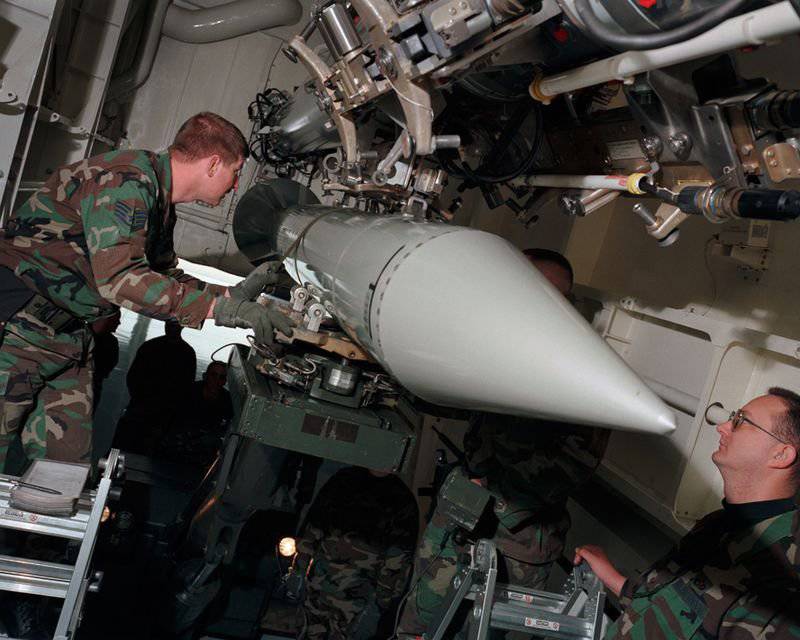
B61-11
Testing of a nuclear bomb B61-11 were performed in the U.S. in November 20, 2013, but Sandia National Laboratories, who were engaged in carrying out the tests, told about them until mid-January 2014. In polygon test is used without bomb warhead. Self Test B61-11 was carried out using a special missile truck, which was installed on the rails. This truck had a bomb to disperse its operating speed (this option is classified). Before the test itself and the truck bomb specially cooled to a temperature corresponding to a high altitude flight of the weapon.
In this case any data on the tests do not lead Sandia Laboratories. It is worth noting that such tests were not carried out in the states in October 2008. At the time, at a special missile truck fire occurred before the start of the engine, one of the lab workers as a result of this incident, suffered severe burns. Until 2008, these tests were conducted on a regular basis. They are held in the framework of the existing programs in the U.S. nuclear arsenal to maintain combat readiness, as well as extending the service life of ammunition.
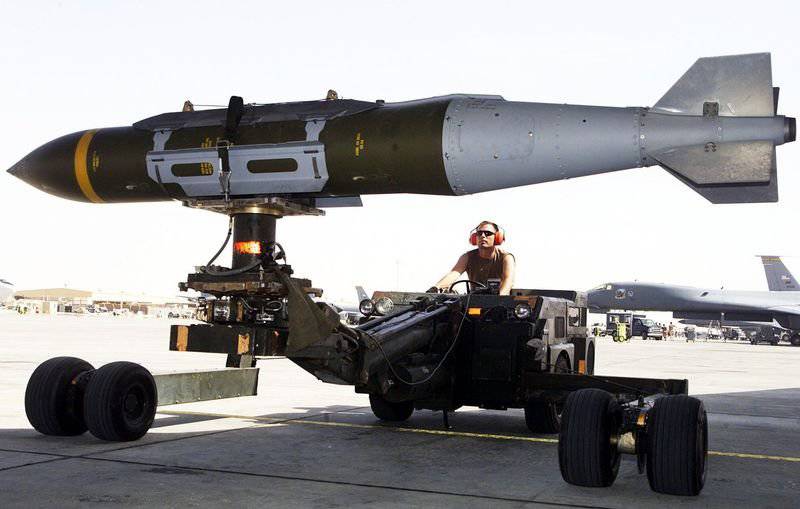
Modern penetrating bombs
B61 thermonuclear bomb was developed in the 1960s of the last century. Since it was made for 11 of its modifications, currently in development is the "Model 12". Last option - put into service - B61-11 was developed in 1997. 11 is a modification of bunker busters. Aviation ordnance B61 - this bomb of variable thickness from 10 to 340 kt. Last modification of this bomb, in fact, is an old charger W-61-7, which was packed in a new needle-shaped body, which had previously been reinforced. There is information that the amplification was performed by using a hull structure of depleted uranium bombs.
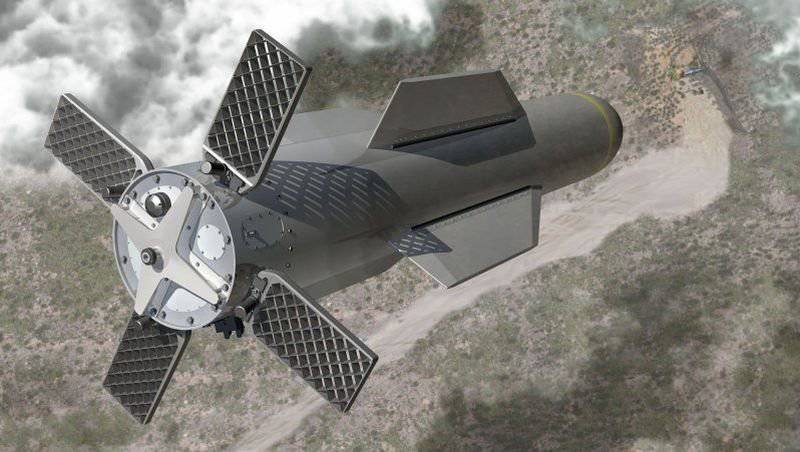
B61-11 - it svobodnopadayuschie bomb (main carrier strategic bomber B-2), it is designed to reset from a great height - 40,000 feet (about 12,200 meters). The bomb is not equipped with a braking parachute, so by the time it hit the ground it can garner a very high speed - up to 610 m / s. Tests have shown that this bomb is able to delve into the dry soil medium density to a depth of 20 feet (6 m). This depth is small, but this is enough to make the main part of the released energy in a nuclear explosion (90%) went to a seismic wave. Current wave power should be enough to defeat any well-protected underground targets.
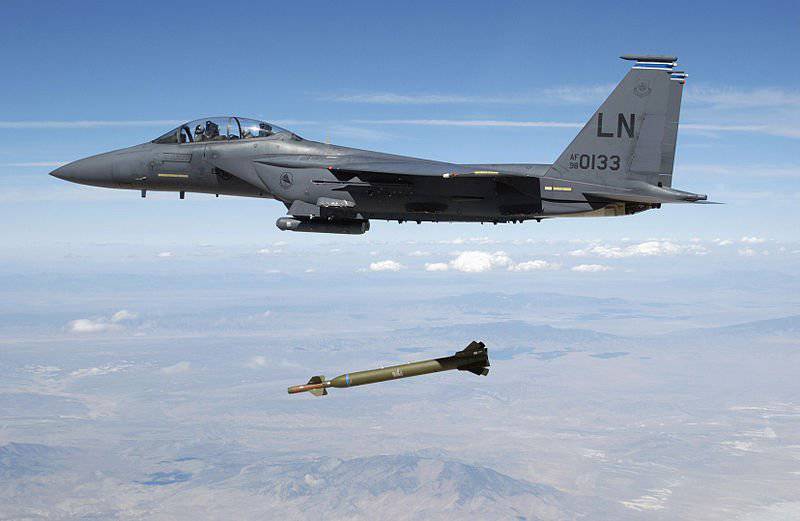
BLU-109 / B
One of the most common today ammunition in service with the U.S. Army, are specialized bunker busters with a warhead BLU-109 / B. These munitions are armed with not only the U.S. Air Force, but the Air Force and Canada, France, Great Britain, Denmark, Belgium, Saudi Arabia, UAE and 7 countries. Warhead weight is 240 kg, all the bombs around 907 kg. Ammunition steel sheath has a thickness of 25.4 mm. Bomb able to penetrate concrete structures with thickness up to 1.8 m This svobodnopadayuschie ammo is mostly used with systems targeting JDAM or Paveway III, who converted it into a controlled air bombs - ASD.
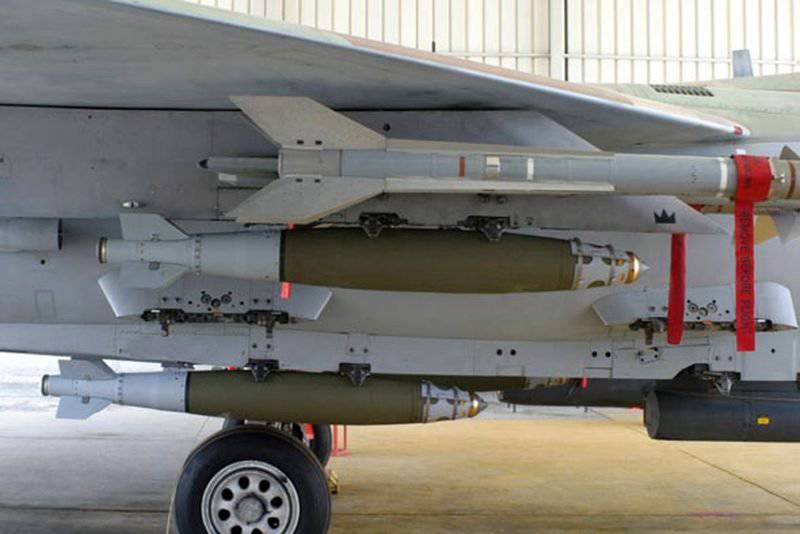
Modern penetrating bombs
With JDAM bomb and warhead BLU-109 / B received index GBU-31. During testing of the weapon dropped from his F-16 fighter with height 6000 and 7.6 thousand meters respectively, the flight speed of 0.8 M. In this case, the bombs could hit the target point, while regarding bombs and 43.2 65 m, respectively. According to the calculations, which were performed by designers of "Boeing" UAB GBU-31, equipped with a wing, able to provide the maximum regarding the discharge point to 75 km, if the height of the reset will be about 12,000 m, the speed of the bomb will be 0.9 M.

GBU-57 (MOP)
USAF use heavy bunker bomb GBU-57, since November 2011, the year they have adopted. At the same time since the adoption of bombs on arms immediately began the process of improvement. According to the Pentagon, the power is not enough bombs to destroy underground bunkers all, primarily Iran. Work on the development and improvement of the bombs engaged Aircraft Corporation "Boeing".
GBU-57 or MOP - Massive Ordnance Penetrator (MOP) - is correctable bunker bomb. Americans specifically developed this munition to combat underground or elevated fortifications located on the territory of North Korea and Iran that could be used to host nuclear facilities. The development of these bombs was carried out by specialists of Boeing, since 2007. It is reported that the total cost of works on designing MOP was 400 million dollars.
Modern penetrating bombs
Length superheavy bombs MPAs is 6 m, its weight - 13 600 kg. Weight of warhead GBU-57 is 2.5 tons. Since this munition is adjustable, the target bomb goes through lead on coordinates GPS. There is information that the original version of the aerial bomb able to penetrate reinforced concrete thickness up to 60 meters. At the same time the ability to break through the concrete in advanced munition currently kept secret.
GBU-28
Currently GBU-28 is considered one of the most effective penetrating bombs are in service with the U.S. Army. Is controlled bombs, which was originally designed for the destruction of high underground facilities such as command posts likely opponent. Bomb was created in 1991. UAB made of aerodynamic configuration "duck" and is equipped with a drop-down in flight wing. Has a semi-active homing on the target. Is an example of a successful military conversion, as it is made using 203-mm barrel decommissioned SAU M110. Weight bombs almost 2.3 tons. This munition able to delve deeper into the soil to a depth of 30 m and punch reinforced concrete floor thickness of 6 m gone on trial on a 30-meter depth ammo even decided not to dig.
Modern penetrating bombs
During testing in the Sandia National Laboratories in 1995 after the dissolution of this ASD on a special trolley rocket failed to break reinforced concrete slab with a total thickness of 6.7 m This bomb has retained enough kinetic energy to fly more then about 1.6 km . For its ability to fight even with very thick slabs, she received the nickname "Deep Throat." In military terms, this bomb has been used only twice. Two bombs were used during "Operation Desert Storm" to defeat the Iraqi military bunkers near Baghdad. One bomb went off target, the second successfully hit Command bunker at Al Taji Air Base, which has been repeatedly bombed, but without disabling it.
MPR-500
In February 2012, presented its own concrete-bomb Israel, the bomb was designated MPR-500. This ammo caliber 500 pounds (227 kg). This bomb is able to penetrate concrete slab thickness up to 1 meter or punch immediately to 4 concrete slab thickness of 200 mm each. With the explosion of the bomb produced a very large number of fragments - to thousands that fly to a distance of 100 meters, effectively hitting enemy manpower. Opting for such a relatively small caliber was made due to the fact that an aircraft can carry a large number of such bombs.
Modern penetrating bombs
Israeli bomb is betonoboynymi svobodnopadayuschie, while it quite easily by using a special kit to transform into an adjustable bomb. Ammunition Israelis developed taking into account available information about building in Lebanon underground fortifications and bunkers, sometimes within a ordinary residential homes or schools.
BetAB
In Russia there are concrete-piercing bombs, the Air Force, but do not have such outstanding features as American ammunition. Currently in our country such bombs are designated as BetAB. These bombs are represented by three major versions: BetAB-500-500U and BetAB BetAB-500SHP. They differ in design, weight and caliber warhead. For example, the weight is 510 kg BatAB500U. This bomb used to destroy nuclear weapons, command control centers, communication centers, underground ammunition depots, shelters made of reinforced concrete. Bomb capable of penetrating reinforced concrete ceiling thickness up to 1.2 m or 3 m to go into the ground. Weight of warhead bomb of TNT is 45 kg. Can be used from heights of 150 to 20 000 meters. Bomb equipped with a stabilizing parachute.
Modern penetrating bombs
Another version BetAB 500SHP-equipped warhead weighing 77 kg. When this is used in a bomb reaction accelerator. First of all, this air munition is designed for the decommissioning of enemy airfields - concrete runways and taxiways. This bomb is capable of penetrating armor thickness up to 550 mm thick reinforced concrete slab up to 1.2 m One such bomb damage in the state to 50 square meters of runway. At the same time the explosion in the middle ground, it leaves a crater 4.5 meters in diameter. Currently BetAB composed by the Russian Air Force and India.
Sources of information:
http://lenta.ru/articles/2014/02/26/penetrating
http://vpk-news.ru/articles/16288
http://first-americans.ru/news-usa/353-gbu-57
http://www.dogswar.ru/boepripasy/sna...a-ypravli.html
=======================
Salam.
March 6, 2014
First time in 6 years Sandia National Laboratories in the United States conducted a series of concrete-test of a nuclear bomb, which received the designation B61-11. When this survey was conducted deepening bombs in the ground (in slow motion). When this bomb, of course, is not equipped with nuclear part and did not explode. Development penetrating bombs, which are also called betonoboynymi in the past few years, interested in many countries. With such weapons can be quite easy to destroy underground bunkers, command centers or warehouses potential enemy. Most active development of this type of ammunition involved in Washington and Tel Aviv. Here's a quick overview of these bombs.

B61-11
Testing of a nuclear bomb B61-11 were performed in the U.S. in November 20, 2013, but Sandia National Laboratories, who were engaged in carrying out the tests, told about them until mid-January 2014. In polygon test is used without bomb warhead. Self Test B61-11 was carried out using a special missile truck, which was installed on the rails. This truck had a bomb to disperse its operating speed (this option is classified). Before the test itself and the truck bomb specially cooled to a temperature corresponding to a high altitude flight of the weapon.
In this case any data on the tests do not lead Sandia Laboratories. It is worth noting that such tests were not carried out in the states in October 2008. At the time, at a special missile truck fire occurred before the start of the engine, one of the lab workers as a result of this incident, suffered severe burns. Until 2008, these tests were conducted on a regular basis. They are held in the framework of the existing programs in the U.S. nuclear arsenal to maintain combat readiness, as well as extending the service life of ammunition.

Modern penetrating bombs
B61 thermonuclear bomb was developed in the 1960s of the last century. Since it was made for 11 of its modifications, currently in development is the "Model 12". Last option - put into service - B61-11 was developed in 1997. 11 is a modification of bunker busters. Aviation ordnance B61 - this bomb of variable thickness from 10 to 340 kt. Last modification of this bomb, in fact, is an old charger W-61-7, which was packed in a new needle-shaped body, which had previously been reinforced. There is information that the amplification was performed by using a hull structure of depleted uranium bombs.

B61-11 - it svobodnopadayuschie bomb (main carrier strategic bomber B-2), it is designed to reset from a great height - 40,000 feet (about 12,200 meters). The bomb is not equipped with a braking parachute, so by the time it hit the ground it can garner a very high speed - up to 610 m / s. Tests have shown that this bomb is able to delve into the dry soil medium density to a depth of 20 feet (6 m). This depth is small, but this is enough to make the main part of the released energy in a nuclear explosion (90%) went to a seismic wave. Current wave power should be enough to defeat any well-protected underground targets.

BLU-109 / B
One of the most common today ammunition in service with the U.S. Army, are specialized bunker busters with a warhead BLU-109 / B. These munitions are armed with not only the U.S. Air Force, but the Air Force and Canada, France, Great Britain, Denmark, Belgium, Saudi Arabia, UAE and 7 countries. Warhead weight is 240 kg, all the bombs around 907 kg. Ammunition steel sheath has a thickness of 25.4 mm. Bomb able to penetrate concrete structures with thickness up to 1.8 m This svobodnopadayuschie ammo is mostly used with systems targeting JDAM or Paveway III, who converted it into a controlled air bombs - ASD.

Modern penetrating bombs
With JDAM bomb and warhead BLU-109 / B received index GBU-31. During testing of the weapon dropped from his F-16 fighter with height 6000 and 7.6 thousand meters respectively, the flight speed of 0.8 M. In this case, the bombs could hit the target point, while regarding bombs and 43.2 65 m, respectively. According to the calculations, which were performed by designers of "Boeing" UAB GBU-31, equipped with a wing, able to provide the maximum regarding the discharge point to 75 km, if the height of the reset will be about 12,000 m, the speed of the bomb will be 0.9 M.

GBU-57 (MOP)
USAF use heavy bunker bomb GBU-57, since November 2011, the year they have adopted. At the same time since the adoption of bombs on arms immediately began the process of improvement. According to the Pentagon, the power is not enough bombs to destroy underground bunkers all, primarily Iran. Work on the development and improvement of the bombs engaged Aircraft Corporation "Boeing".
GBU-57 or MOP - Massive Ordnance Penetrator (MOP) - is correctable bunker bomb. Americans specifically developed this munition to combat underground or elevated fortifications located on the territory of North Korea and Iran that could be used to host nuclear facilities. The development of these bombs was carried out by specialists of Boeing, since 2007. It is reported that the total cost of works on designing MOP was 400 million dollars.
Modern penetrating bombs
Length superheavy bombs MPAs is 6 m, its weight - 13 600 kg. Weight of warhead GBU-57 is 2.5 tons. Since this munition is adjustable, the target bomb goes through lead on coordinates GPS. There is information that the original version of the aerial bomb able to penetrate reinforced concrete thickness up to 60 meters. At the same time the ability to break through the concrete in advanced munition currently kept secret.
GBU-28
Currently GBU-28 is considered one of the most effective penetrating bombs are in service with the U.S. Army. Is controlled bombs, which was originally designed for the destruction of high underground facilities such as command posts likely opponent. Bomb was created in 1991. UAB made of aerodynamic configuration "duck" and is equipped with a drop-down in flight wing. Has a semi-active homing on the target. Is an example of a successful military conversion, as it is made using 203-mm barrel decommissioned SAU M110. Weight bombs almost 2.3 tons. This munition able to delve deeper into the soil to a depth of 30 m and punch reinforced concrete floor thickness of 6 m gone on trial on a 30-meter depth ammo even decided not to dig.
Modern penetrating bombs
During testing in the Sandia National Laboratories in 1995 after the dissolution of this ASD on a special trolley rocket failed to break reinforced concrete slab with a total thickness of 6.7 m This bomb has retained enough kinetic energy to fly more then about 1.6 km . For its ability to fight even with very thick slabs, she received the nickname "Deep Throat." In military terms, this bomb has been used only twice. Two bombs were used during "Operation Desert Storm" to defeat the Iraqi military bunkers near Baghdad. One bomb went off target, the second successfully hit Command bunker at Al Taji Air Base, which has been repeatedly bombed, but without disabling it.
MPR-500
In February 2012, presented its own concrete-bomb Israel, the bomb was designated MPR-500. This ammo caliber 500 pounds (227 kg). This bomb is able to penetrate concrete slab thickness up to 1 meter or punch immediately to 4 concrete slab thickness of 200 mm each. With the explosion of the bomb produced a very large number of fragments - to thousands that fly to a distance of 100 meters, effectively hitting enemy manpower. Opting for such a relatively small caliber was made due to the fact that an aircraft can carry a large number of such bombs.
Modern penetrating bombs
Israeli bomb is betonoboynymi svobodnopadayuschie, while it quite easily by using a special kit to transform into an adjustable bomb. Ammunition Israelis developed taking into account available information about building in Lebanon underground fortifications and bunkers, sometimes within a ordinary residential homes or schools.
BetAB
In Russia there are concrete-piercing bombs, the Air Force, but do not have such outstanding features as American ammunition. Currently in our country such bombs are designated as BetAB. These bombs are represented by three major versions: BetAB-500-500U and BetAB BetAB-500SHP. They differ in design, weight and caliber warhead. For example, the weight is 510 kg BatAB500U. This bomb used to destroy nuclear weapons, command control centers, communication centers, underground ammunition depots, shelters made of reinforced concrete. Bomb capable of penetrating reinforced concrete ceiling thickness up to 1.2 m or 3 m to go into the ground. Weight of warhead bomb of TNT is 45 kg. Can be used from heights of 150 to 20 000 meters. Bomb equipped with a stabilizing parachute.
Modern penetrating bombs
Another version BetAB 500SHP-equipped warhead weighing 77 kg. When this is used in a bomb reaction accelerator. First of all, this air munition is designed for the decommissioning of enemy airfields - concrete runways and taxiways. This bomb is capable of penetrating armor thickness up to 550 mm thick reinforced concrete slab up to 1.2 m One such bomb damage in the state to 50 square meters of runway. At the same time the explosion in the middle ground, it leaves a crater 4.5 meters in diameter. Currently BetAB composed by the Russian Air Force and India.
Sources of information:
http://lenta.ru/articles/2014/02/26/penetrating
http://vpk-news.ru/articles/16288
http://first-americans.ru/news-usa/353-gbu-57
http://www.dogswar.ru/boepripasy/sna...a-ypravli.html
=======================
Salam.
0
4.8K
7
Thread Digembok
Urutan
Terbaru
Terlama
Thread Digembok
Komunitas Pilihan